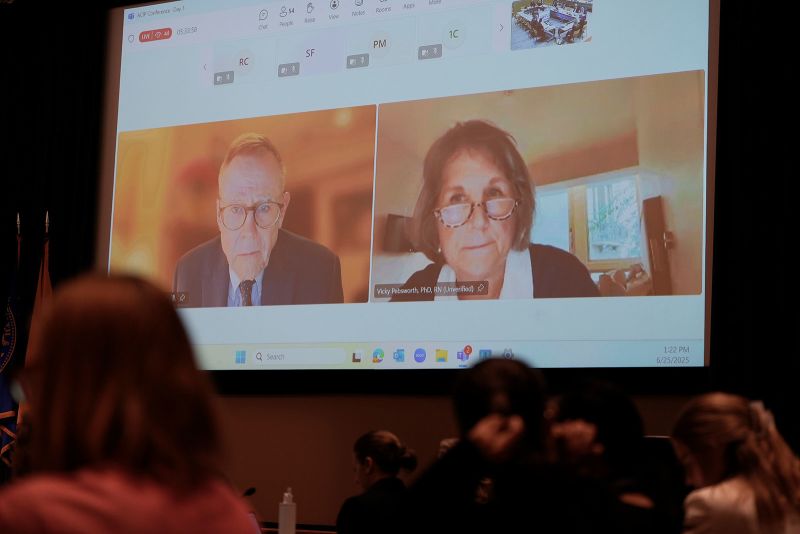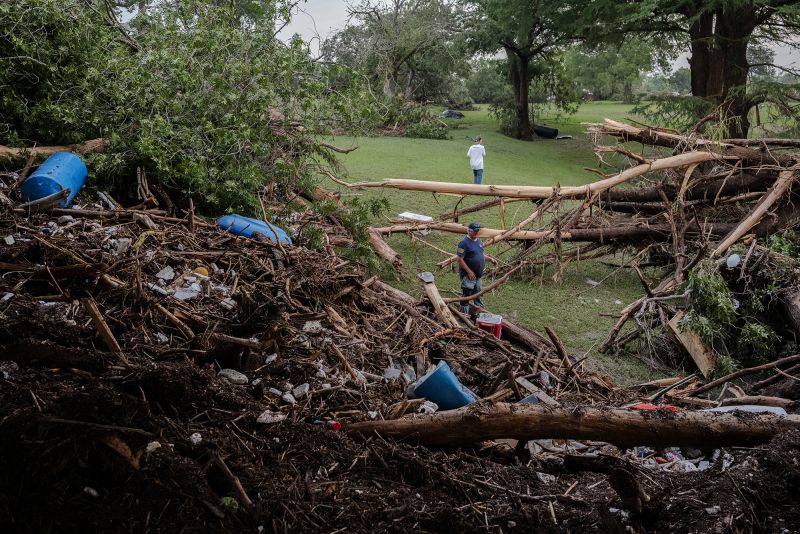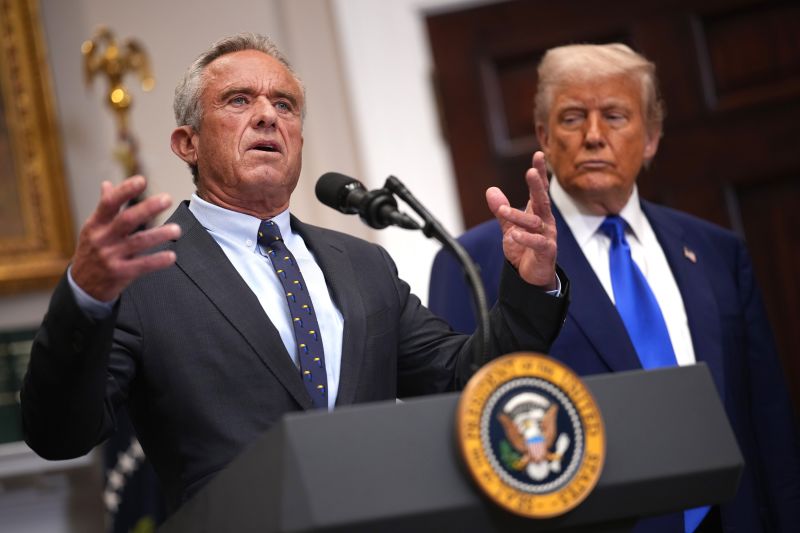Measles cases surge to record high since disease was declared eliminated in the US

Falling childhood vaccine coverage and a large, smoldering outbreak that was kindled in an undervaccinated pocket of West Texas have driven the United States to a troubling new milestone: There have been more measles cases in the US this year than any other since the disease was declared eliminated a quarter-century ago.
There have been at least 1,277 confirmed cases of measles reported in the US in 2025, according to data from the Johns Hopkins University Center for Outbreak Response Innovation. Just halfway through the year, the case tally has already surpassed the last record from 2019, when there were a total of 1,274 cases.
Experts say this year’s cases are likely to be severely undercounted because many are going unreported. Three people have died from measles this year – two children in Texas and one adult in New Mexico, all of whom were unvaccinated – matching the total number of US measles deaths from the previous two and a half decades.
Measles was declared eliminated in the US in 2000, meaning there has not been continuous transmission for more than a year at a time. Reaching this status was “a historic public health achievement,” according to the US Centers for Disease Control and Prevention, possible in large part because of vaccine development. The measles-mumps-rubella (MMR) vaccine that is most commonly used first became widely available in the US in the 1970s.
Before this year, there have been an average of about 180 measles cases reported each year since the disease was declared eliminated, according to CDC data.
In 2019, large outbreaks in New York threatened elimination status; those outbreaks were concentrated in Orthodox Jewish communities in Brooklyn and Rockland County that had been targeted with anti-vaccine disinformation for years.
This year, the vast majority of measles cases have been in Texas, with more than 750 confirmed cases associated with one outbreak that started in late January. If cases associated with that outbreak continue to accumulate through January of next year, the US could lose its measles elimination status.
Most of those cases – more than 400 since the start of the year – have been in Gaines County, according to the state health department, where vaccination rates are well below the recommended level. In the 2024-25 school year, nearly 1 in 4 kindergartners in Gaines County did not have their required MMR vaccine, one of the worst rates in the state.

Dozens of cases in New Mexico and Oklahoma have also been linked to the West Texas outbreak, and cases reported in Kansas may also be connected.
Special vaccination clinics that have been stood up in response to the outbreak have led to additional coverage for thousands of people. Many of the affected counties have also introduced expanded vaccination guidance, allowing infants to get their first shot as early as 6 months old instead of waiting until 1 year. In New Mexico, nearly twice as many MMR vaccines have been administered this year than there were at this point last year, according to data from the state health department.
And a recent analysis of health records by Truveta, a health-care data and analytics company, shows that early vaccination rates jumped among infants in Texas. MMR vaccination rates among 6-month-olds in Texas this year are more than eight times higher than they were in 2019, and in March and April, about 1 in 5 children who received their first measles shot in Texas had gotten it early, before their first birthday.
But as the pace of new cases associated with the West Texas outbreak has slowed, cases have continued to accumulate across the country. There have been at least 27 total outbreaks – defined as three or more related cases – and at least 38 states have reported at least one case this year.
Cases rose quickly in Colorado last month when an out-of-state traveler flew while infectious, leading to multiple cases among passengers on the same plane, and others among people who were in the airport at the same time and broader community spread from those cases.

Other cases among Colorado residents were linked to travel to Chihuahua, Mexico, where there is also a large outbreak concentrated among the local Mennonite population. There is another large outbreak happening in Ontario, Canada, which was linked to multiple cases in Michigan. At least one person has died from measles this year in Canada, and there have been nine deaths in Mexico.
In April, Mexico issued a warning for people traveling to the US and Canada due to high measles case rates. The CDC has also stepped up its guidance for travelers, advising that anyone traveling internationally should be vaccinated with two doses of the MMR vaccine.
Most cases are in unvaccinated people
The vast majority of cases in the US this year have been in people who are unvaccinated; only about 8% of confirmed cases have been in people who had received one or two doses of the MMR vaccine, according to the CDC. At least 155 people with measles – about 1 out of every 8 cases – have been hospitalized this year, CDC data shows, and 28% of cases have been in children younger than 5.
The MMR vaccine is safe and extremely effective – one dose is 93% effective against measles, and two doses are 97% effective – but measles is one of the most highly transmissible diseases in the world.

The US Department of Health and Human Services has set a goal that at least 95% of children in kindergarten will have gotten two doses of the measles-mumps-rubella (MMR) vaccine, a threshold necessary to help prevent outbreaks of the highly contagious disease. The US has now fallen short of that threshold for four years in a row.
A record share of US kindergartners had an exemption for required vaccinations in the 2023-24 school year, leaving more than 125,000 new schoolchildren without coverage for at least one state-mandated vaccine, according to data published by the CDC in October.
When the measles case count reached its previous record in 2019 – under the first Trump administration – both the HHS secretary and CDC director at the time released statements emphasizing the safety and effectiveness of the MMR vaccine and encouraging Americans to get vaccinated.
However, the CDC still does not have a director, and HHS Secretary Robert F. Kennedy Jr. has a long and complicated history with measles vaccines.
In April, when there had been about 600 measles cases in the US, Kennedy made his strongest endorsement of vaccination yet – but it stood in stark contrast to years of work against measles vaccines. And last month, Kennedy dismissed an expert panel of vaccine advisers that has historically guided the federal government’s vaccine recommendations, a move that concerned public health officials across the country.
“With an ongoing measles outbreak and routine child vaccination rates declining, this move will further fuel the spread of vaccine-preventable illnesses,” Dr. Bruce A. Scott, president of the American Medical Association, said in a statement at the time.








